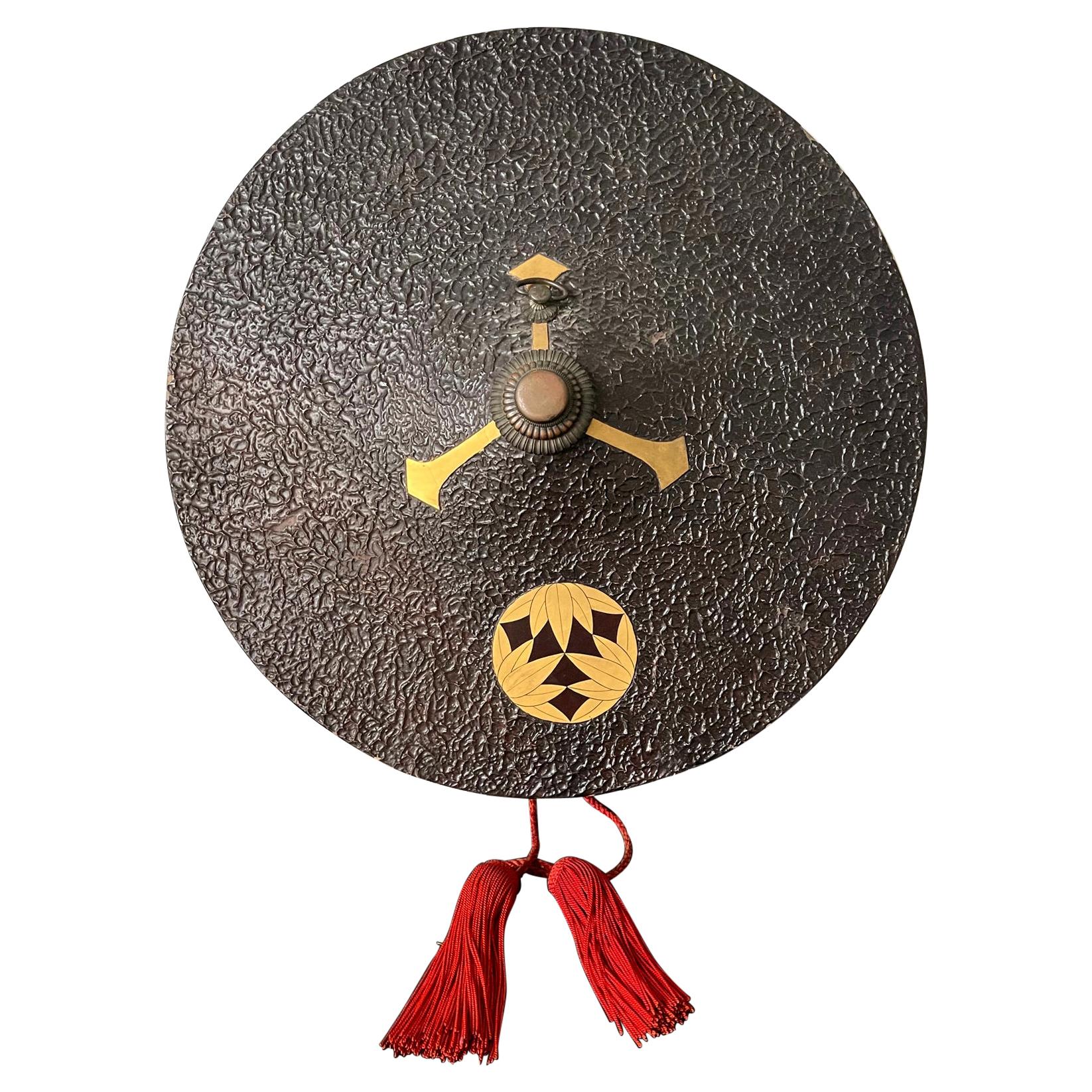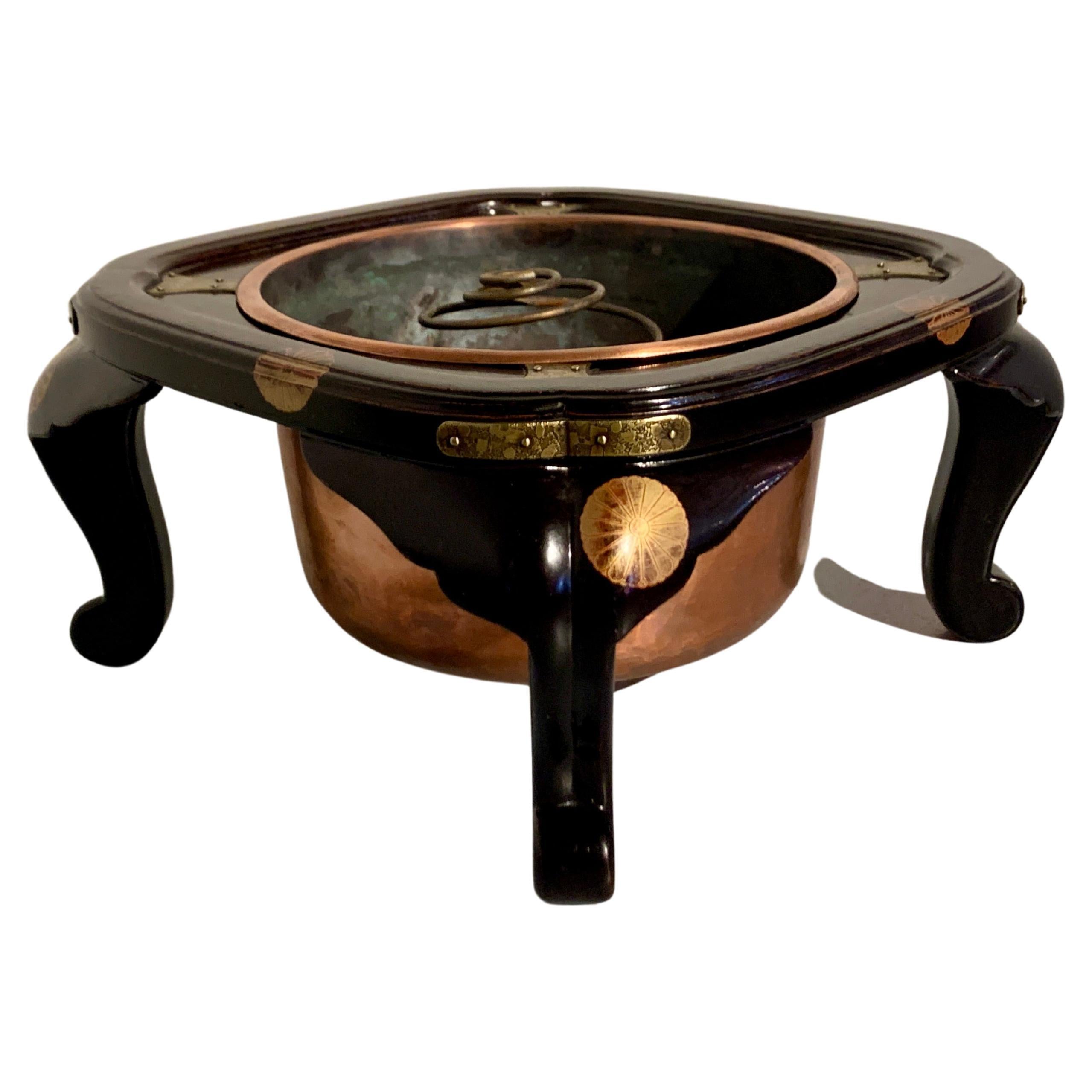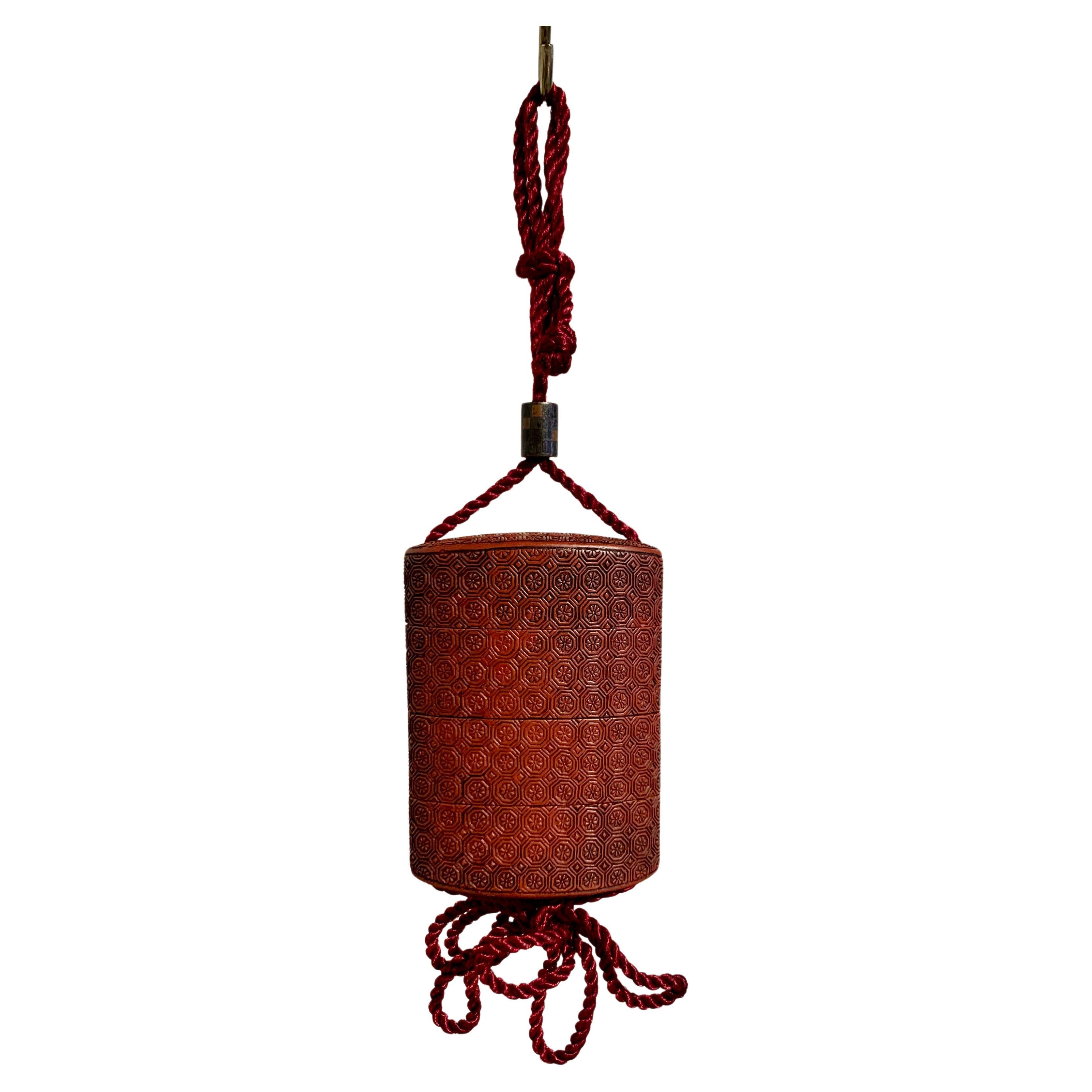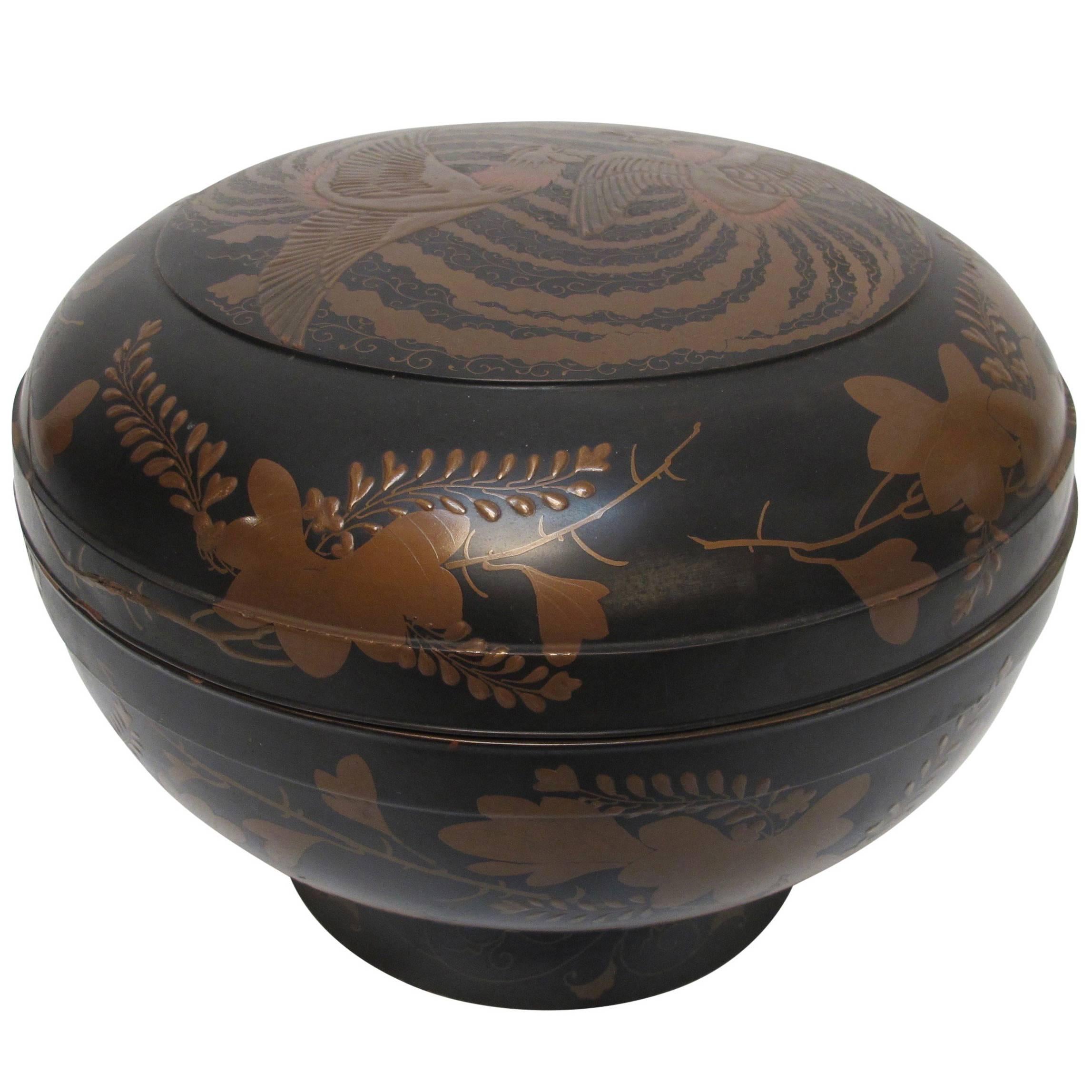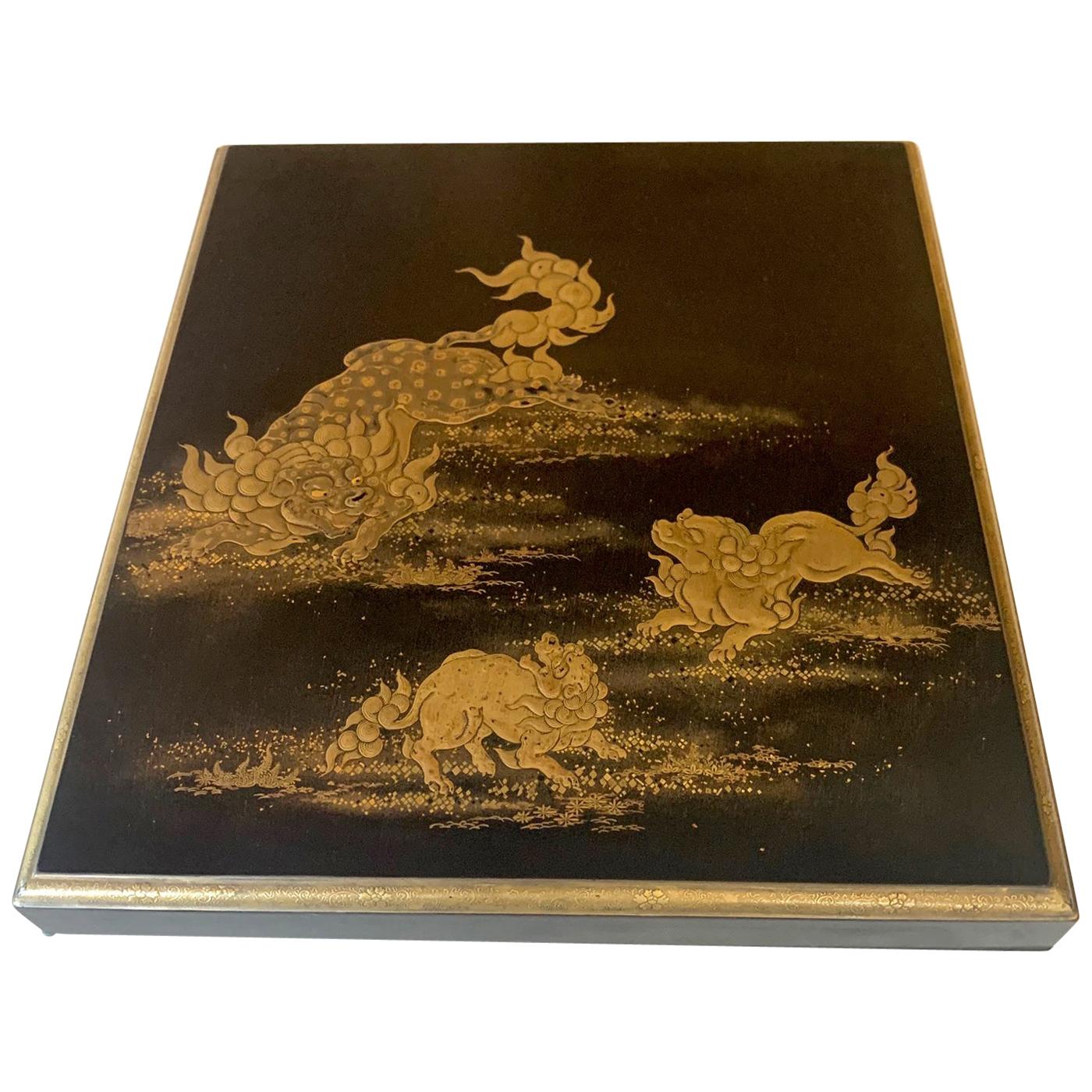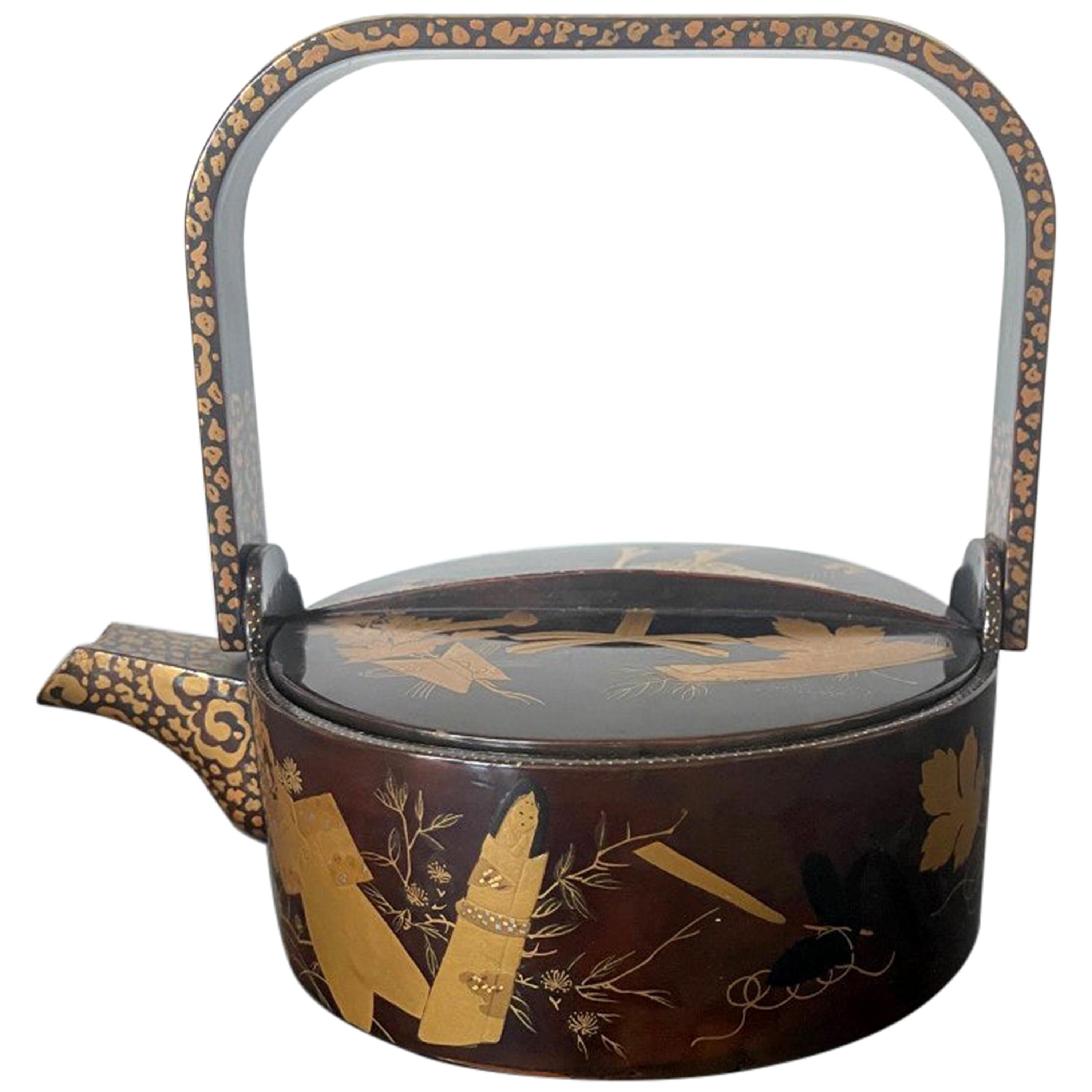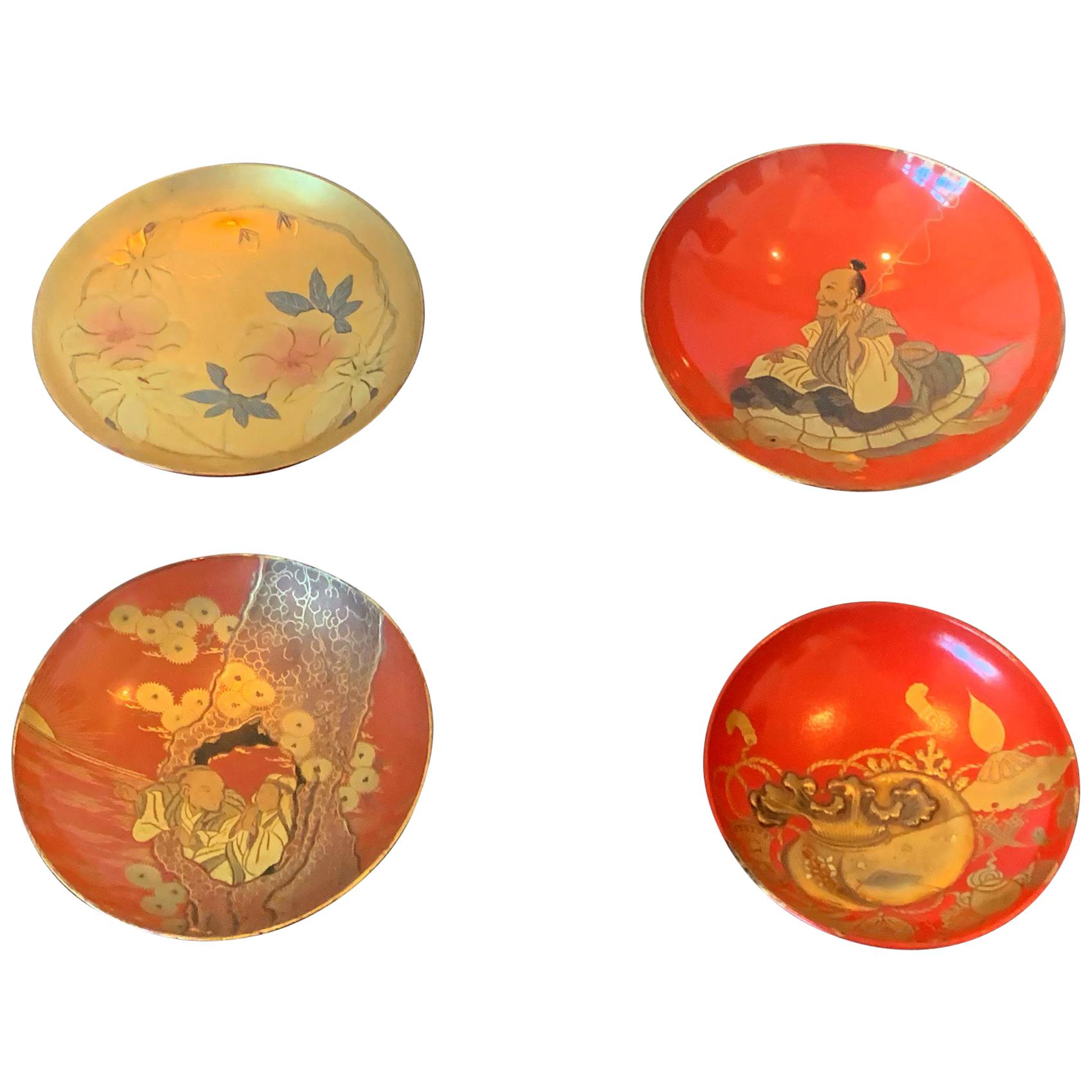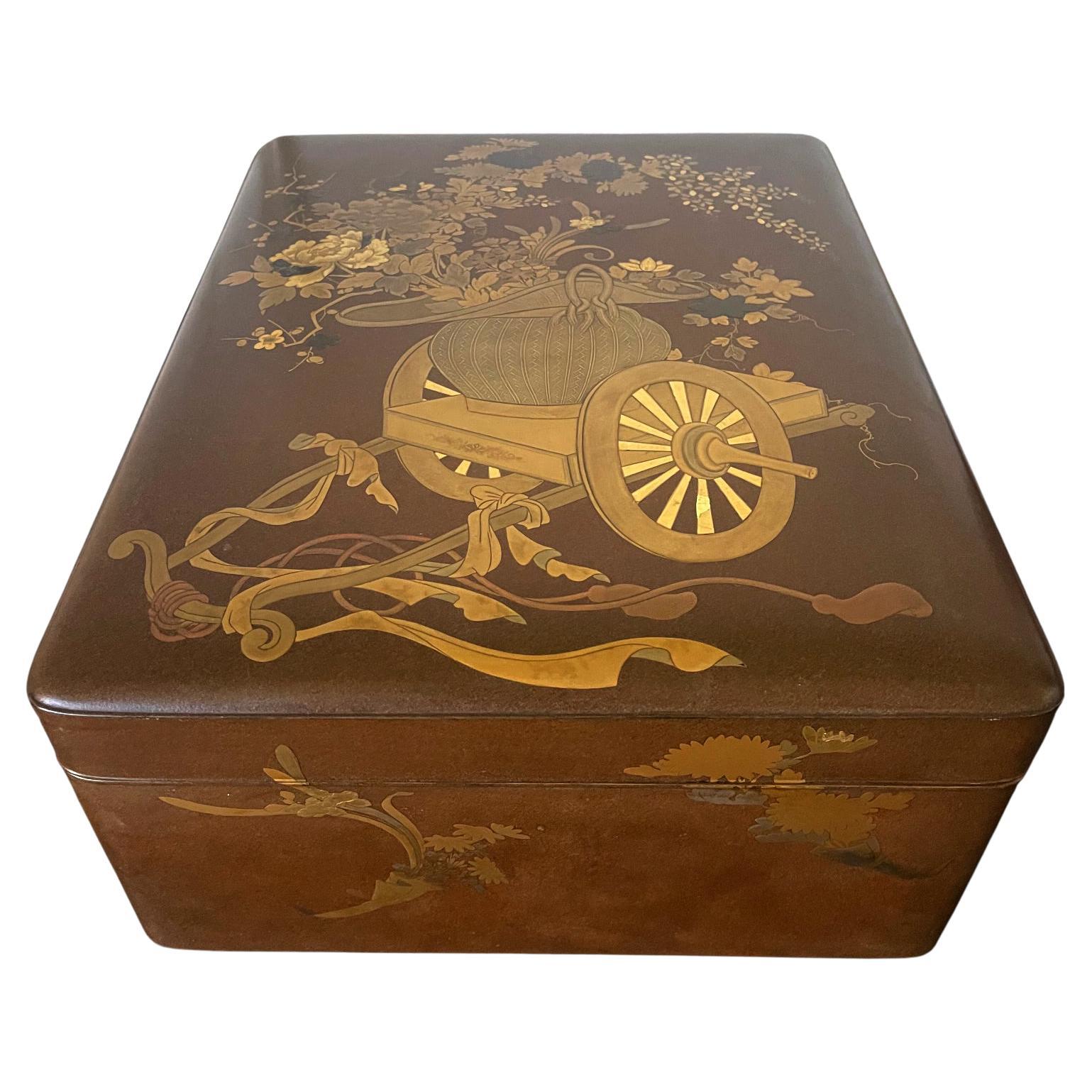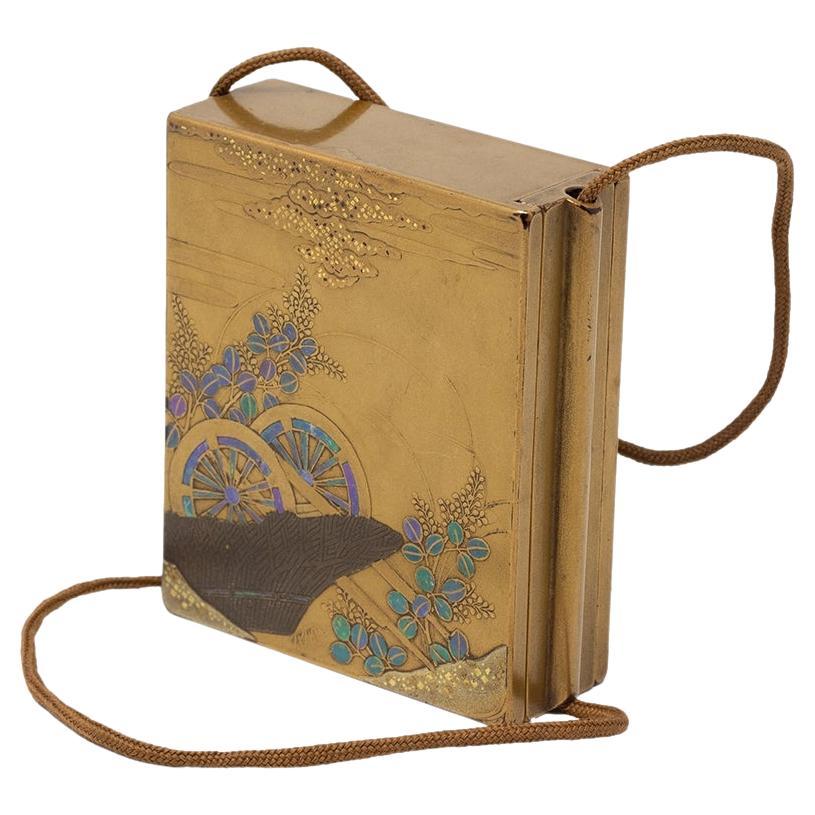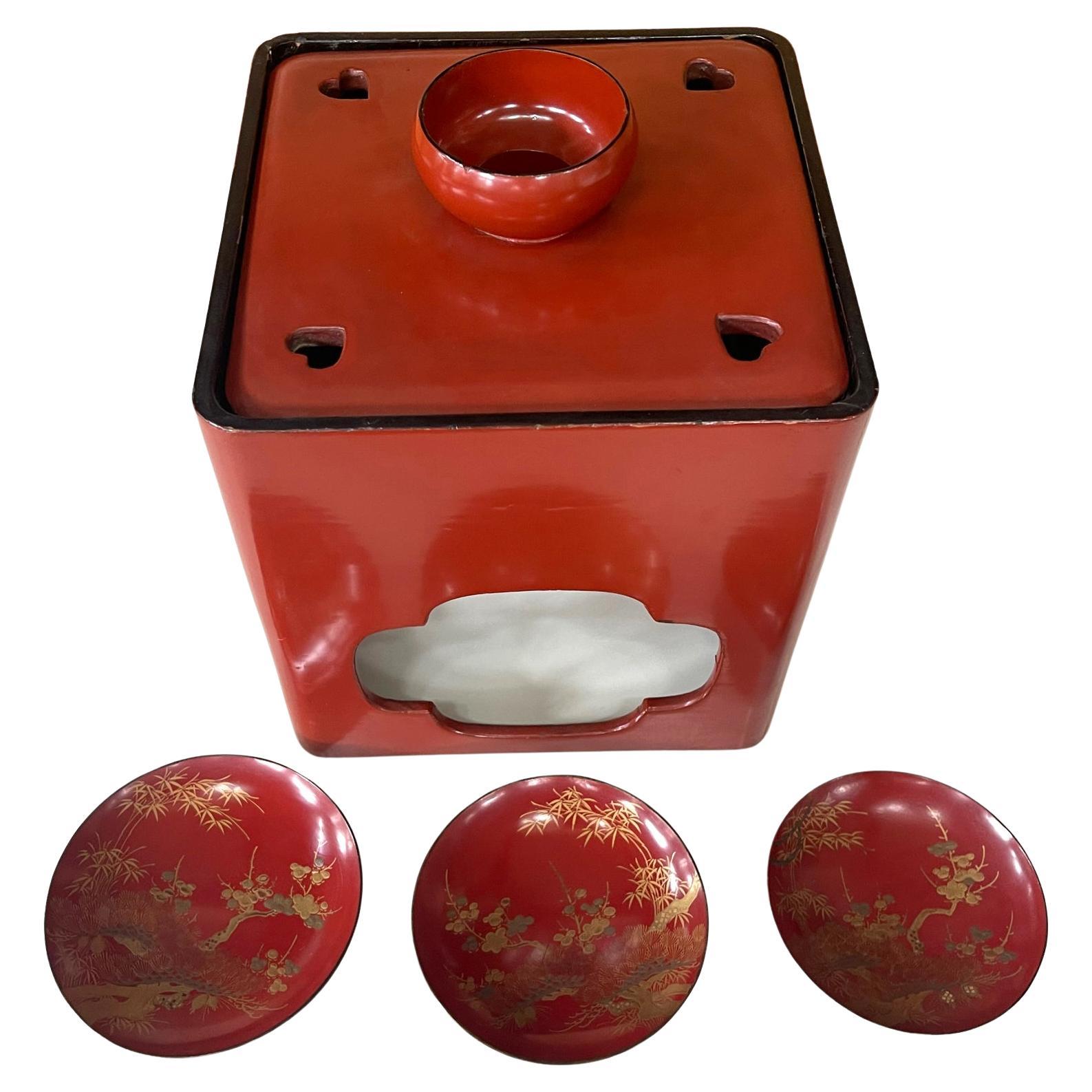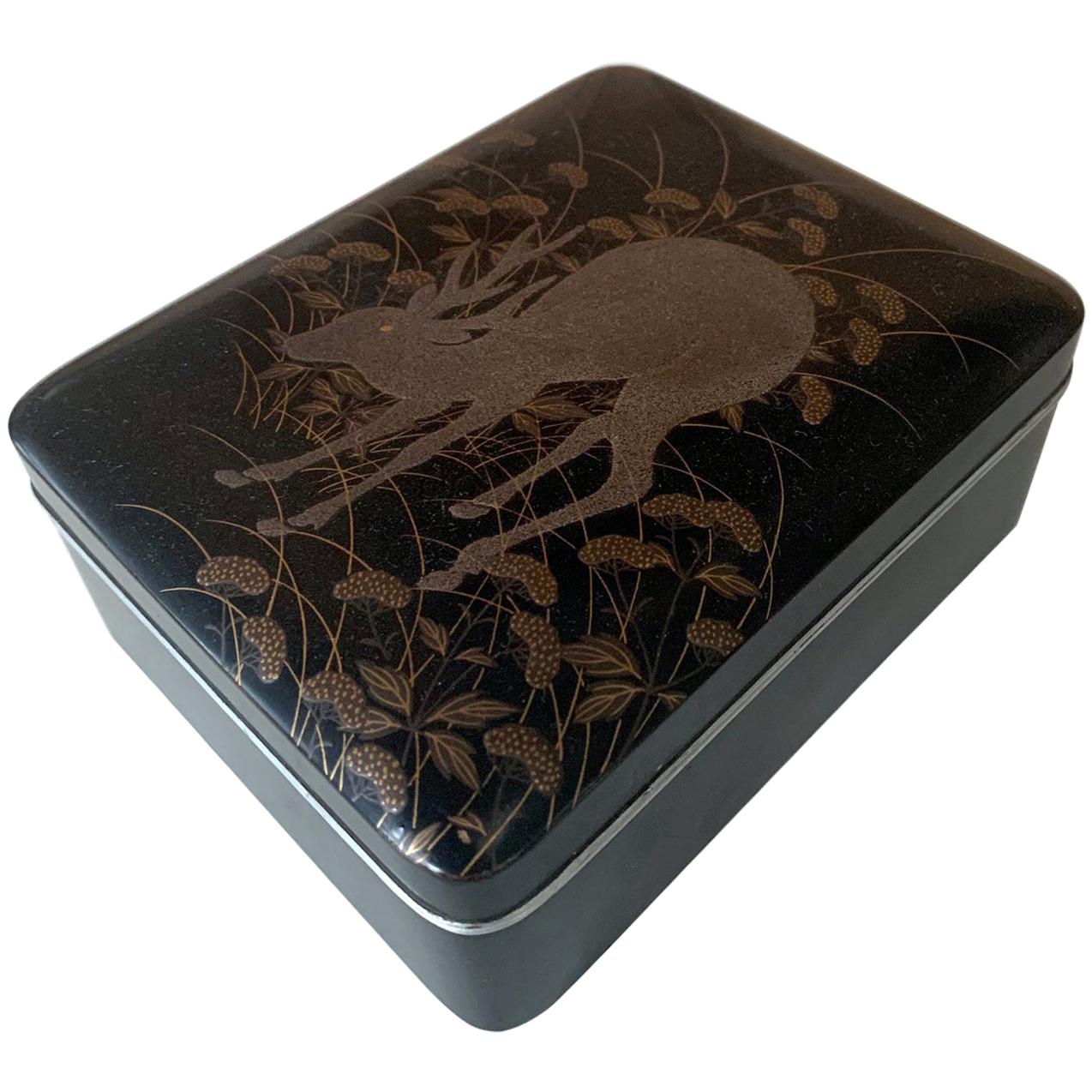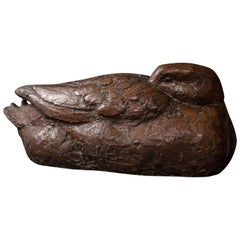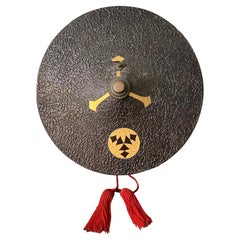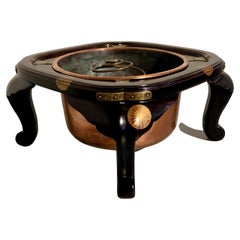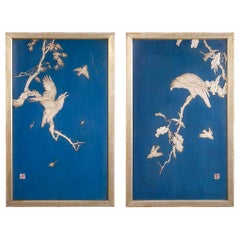
Pair of Japanese Blue Lacquered Panels with Carved Birds in Trees Meiji Period
View Similar Items
1 of 9
Pair of Japanese Blue Lacquered Panels with Carved Birds in Trees Meiji Period
About the Item
- Dimensions:Height: 32 in (81.28 cm)Width: 20 in (50.8 cm)Depth: 1 in (2.54 cm)
- Sold As:Set of 2
- Materials and Techniques:
- Place of Origin:
- Period:
- Date of Manufacture:circa 1890
- Condition:Wear consistent with age and use.
- Seller Location:Heathfield, GB
- Reference Number:1stDibs: LU2861314871682
You May Also Like
- Japanese Showa Period Dry Lacquer Sculpture of a DuckLocated in Hudson, NYShowa Period (1926 - 1989) sculpture of a duck resting with its head tucked into its wings. Dry lacquer, or kanshitsu, is a process of layering and manipulating lacquer soaked cloth ...Category
Early 20th Century Japanese Showa Lacquer
MaterialsLacquer
- Japanese Lacquered Samurai Jingasa Hat Edo PeriodLocated in Atlanta, GAA bespoken Japanese historical hat known as Jinggasa (militant hat) that was worn by samurai in Edo period (1603-1868) circa 18-19th century. There were several subtypes of Jingasa a...Category
Antique 19th Century Japanese Japonisme Lacquer
MaterialsWood, Lacquer
- Japanese Lacquer Hibachi with Imperial Chrysanthemum, Meiji Period, JapanLocated in Austin, TXA simple and elegant Japanese lacquer hibachi stand with imperial chrysanthemum mon and copper liner, now modified as an usubata, late Meiji Period, ci...Category
Antique Early 1900s Lacquer
MaterialsCopper
- Japanese Carved Cinnabar Lacquer Inro, Meiji Period, late 19th c, JapanLocated in Austin, TXA good Japanese carved cinnabar three case inro with mixed metal ojime, Meiji period, late 19th century, Japan. The three case inro of standard form, comprised of three container se...Category
Antique Late 19th Century Japanese Meiji Lacquer
MaterialsSilver, Copper
- Japanese Meiji Period Lacquered Lidded BowlLocated in San Francisco, CAA large Japanese Meiji period lacquered lidded soup or rice bowl. Beautiful hand-painted decoration inside and out.Category
Antique Late 19th Century Japanese Lacquer
MaterialsLacquer
- Japanese Lacquer Box with Fine Maki-e Decoration Meiji PeriodLocated in Atlanta, GAA lacquered wood box with lid from Japan circa 19th century Meiji Period. The finely decorated box was used to store paper slips and small documents on the desk. It is overall finished with black lacquer (kuro) with sparse Mura-Nashiji effect outside and on the top surface of the lid, there are three Komainu, (sometimes known as Shishi or Japanese lions) frolicking and forming a circle in lively motion. Komainu are auspicious animals in Japanese cultures in both Shinto and Buddhism tradition. Originally from China, these animals symbolizes guardians to ward off evil spirits. Hiramaki-e was used in combination with carving and combing to render the lions with various surface textures. A gilt border with an slight angle was given to the lid and even the thin band is decorated with miniature floral scrolls. The interior of the box was finished in a dense nashiji. Underneath the lid, a cluster of peonies open lavishly by two gentle mounts. Takamaki-e (high relief) in both gold and silver were...Category
Antique Late 19th Century Japanese Japonisme Lacquer
MaterialsWood, Lacquer
Recently Viewed
View AllMore Ways To Browse
Japanese Carved Bone
Meiji Ivory
Large Carved Bone Asian
Japanese Ivory Carving
Japanese Ivory Carvings
Antique Japanese Ivory Carvings
Finch In Sculpture
Wooden Carving
Head Carvings
Head Carving
Flower Carving
Myanmar Art
Burma Art
Antique Japan Wood
Japanese Antique Wood
Chinese Carved Sculptures
Japanese Antique Wood Furniture
Antique Asian Sculpture

